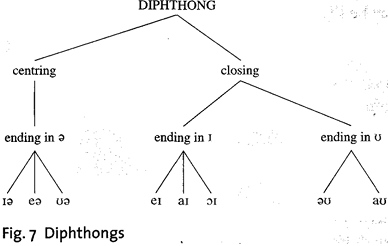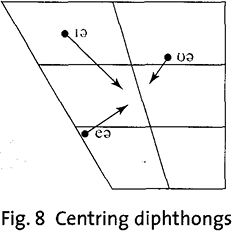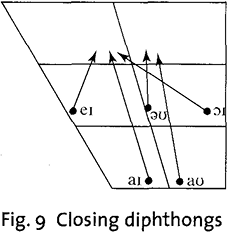

Grammar


Tenses


Present

Present Simple

Present Continuous

Present Perfect

Present Perfect Continuous


Past

Past Simple

Past Continuous

Past Perfect

Past Perfect Continuous


Future

Future Simple

Future Continuous

Future Perfect

Future Perfect Continuous


Parts Of Speech


Nouns

Countable and uncountable nouns

Verbal nouns

Singular and Plural nouns

Proper nouns

Nouns gender

Nouns definition

Concrete nouns

Abstract nouns

Common nouns

Collective nouns

Definition Of Nouns

Animate and Inanimate nouns

Nouns


Verbs

Stative and dynamic verbs

Finite and nonfinite verbs

To be verbs

Transitive and intransitive verbs

Auxiliary verbs

Modal verbs

Regular and irregular verbs

Action verbs

Verbs


Adverbs

Relative adverbs

Interrogative adverbs

Adverbs of time

Adverbs of place

Adverbs of reason

Adverbs of quantity

Adverbs of manner

Adverbs of frequency

Adverbs of affirmation

Adverbs


Adjectives

Quantitative adjective

Proper adjective

Possessive adjective

Numeral adjective

Interrogative adjective

Distributive adjective

Descriptive adjective

Demonstrative adjective


Pronouns

Subject pronoun

Relative pronoun

Reflexive pronoun

Reciprocal pronoun

Possessive pronoun

Personal pronoun

Interrogative pronoun

Indefinite pronoun

Emphatic pronoun

Distributive pronoun

Demonstrative pronoun

Pronouns


Pre Position


Preposition by function

Time preposition

Reason preposition

Possession preposition

Place preposition

Phrases preposition

Origin preposition

Measure preposition

Direction preposition

Contrast preposition

Agent preposition


Preposition by construction

Simple preposition

Phrase preposition

Double preposition

Compound preposition

prepositions


Conjunctions

Subordinating conjunction

Correlative conjunction

Coordinating conjunction

Conjunctive adverbs

conjunctions


Interjections

Express calling interjection

Phrases

Sentences


Grammar Rules

Passive and Active

Preference

Requests and offers

wishes

Be used to

Some and any

Could have done

Describing people

Giving advices

Possession

Comparative and superlative

Giving Reason

Making Suggestions

Apologizing

Forming questions

Since and for

Directions

Obligation

Adverbials

invitation

Articles

Imaginary condition

Zero conditional

First conditional

Second conditional

Third conditional

Reported speech

Demonstratives

Determiners


Linguistics

Phonetics

Phonology

Linguistics fields

Syntax

Morphology

Semantics

pragmatics

History

Writing

Grammar

Phonetics and Phonology

Semiotics


Reading Comprehension

Elementary

Intermediate

Advanced


Teaching Methods

Teaching Strategies

Assessment
Diphthongs
المؤلف:
Peter Roach
المصدر:
English Phonetics and Phonology A practical course
الجزء والصفحة:
28-3
2024-10-11
1824
Diphthongs
BBC pronunciation has a large number of diphthongs - sounds which consist of a movement or glide from one vowel to another. A vowel which remains constant and does not glide is called a pure vowel.
In terms of length, diphthongs are similar to the long vowels described above. Perhaps the most important thing to remember about all the diphthongs is that the first part is much longer and stronger than the second part; for example, most of the diphthong aɪ (as in the words 'eye', 'I') consists of the a vowel, and only in about the last quarter of the diphthong does the glide to I become noticeable. As the glide to ɪ happens, the loudness of the sound decreases. As a result, the ɪ part is shorter and quieter. Foreign learners should, therefore, always remember that the last part of English diphthongs must not be made too strongly.
The total number of diphthongs is eight (though ʊə is increasingly rare). The easiest way to remember them is in terms of three groups divided as in this diagram (Fig. 7):

The centring diphthongs glide towards the ə (schwa) vowel, as the symbols indicate.
ɪə (example words: 'beard', 'weird', 'fierce') The starting point is a little closer than I in 'bit', 'bin',
eə (example words: 'aired', 'cairn', 'scarce') This diphthong begins with a vowel sound that is more open than the e of 'get', 'men'.
ʊə (example words: 'moored', 'tour', 'lure') For speakers who have this diphthong, this has a starting point similar to U in 'put', 'pull'. Many speakers pronounce ɔ: instead.

The closing diphthongs have the characteristic that they all end with a glide towards a closer vowel. Because the second part of the diphthong is weak, they often do not reach a position that could be called close. The important thing is that a glide from a relatively more open towards a relatively closer vowel is produced.
Three of the diphthongs glide towards ɪ, as described below:
eɪ (example words: 'paid', 'pain', 'face') The starting point is the same as the e of 'get', 'men',
aɪ (example words: 'tide', 'time', 'nice') This diphthong begins with an open vowel which is between front and back; it is quite similar to the Λ of the words 'cut', 'bun',
ɔɪ (example words: 'void', 'loin', 'voice') The first part of this diphthong is slightly more open than ɔ: in 'ought', 'born'.

Two diphthongs glide towards U, so that as the tongue moves closer to the roof of the mouth there is at the same time a rounding movement of the lips. This movement is not a large one, again because the second part of the diphthong is weak.
əʊ (example words: 'load', 'home', 'most') The vowel position for the beginning of this is the same as for the "schwa" vowel ə, as found in the first syllable of the word 'about'. The lips may be slightly rounded in anticipation of the glide towards ʊ, for which there is quite noticeable lip-rounding.
aʊ (example words: 'loud', 'gown', 'house') This diphthong begins with a vowel similar to aI. Since this is an open vowel, a glide to ʊ would necessitate a large movement, and the tongue often does not reach the u position. There is only slight lip-rounding.
 الاكثر قراءة في Phonetics and Phonology
الاكثر قراءة في Phonetics and Phonology
 اخر الاخبار
اخر الاخبار
اخبار العتبة العباسية المقدسة

الآخبار الصحية















 قسم الشؤون الفكرية يصدر كتاباً يوثق تاريخ السدانة في العتبة العباسية المقدسة
قسم الشؤون الفكرية يصدر كتاباً يوثق تاريخ السدانة في العتبة العباسية المقدسة "المهمة".. إصدار قصصي يوثّق القصص الفائزة في مسابقة فتوى الدفاع المقدسة للقصة القصيرة
"المهمة".. إصدار قصصي يوثّق القصص الفائزة في مسابقة فتوى الدفاع المقدسة للقصة القصيرة (نوافذ).. إصدار أدبي يوثق القصص الفائزة في مسابقة الإمام العسكري (عليه السلام)
(نوافذ).. إصدار أدبي يوثق القصص الفائزة في مسابقة الإمام العسكري (عليه السلام)


















